Kim Tschang-Yeul: Drops and Strokes
du 14 au 30 avril 2023
From April 14 to July 30, 2023, our visitors are invited to discover the work of world-renowned Korean painter Kim Tschang-Yeul (1929-2021).
Temporary exhibitions' rooms
Ground floor of the Cernuschi Museum
7 avenue Vélasquez, 75008 Paris
Tuesday to Sunday, 10am to 6pm, except for public holidays (ticket office closes at 5:30pm)
Free entrance
Kim Tschang-Yeul (1929-2021) was for many decades one of the few Korean painters who gained international celebrity and recognition. Alongside other visual artists of his generation, he contributed, after the Korean War (1950-1953), to the effervescence of the artistic scene and to the introduction in his homeland of abstract expressions in line with the principal trends of Western Art.
Encouraged by Kim Whanki (1913-1974), another great figure in Korean art, he carried on with his career and training in New York between 1965 and 1969. It was nevertheless in Paris, where he settled after his American stay and remained until returning to Korea in 2013, that he developed the vocabulary for which he is known today all over the world: the trompe-l’oeil representation of waterdrops.
If this element, by virtue of its omnipresence, has captured the public’s attention, it is often accompanied by the more or less discreet presence of Chinese characters in the background of each work. This exhibition is devoted to this latter motif and its significance in the work of Kim Tschang-Yeul. These writings remind one of the possible twofold interpretation of creations rooted both in the developments of a partly globalized art and in an Asian culture.
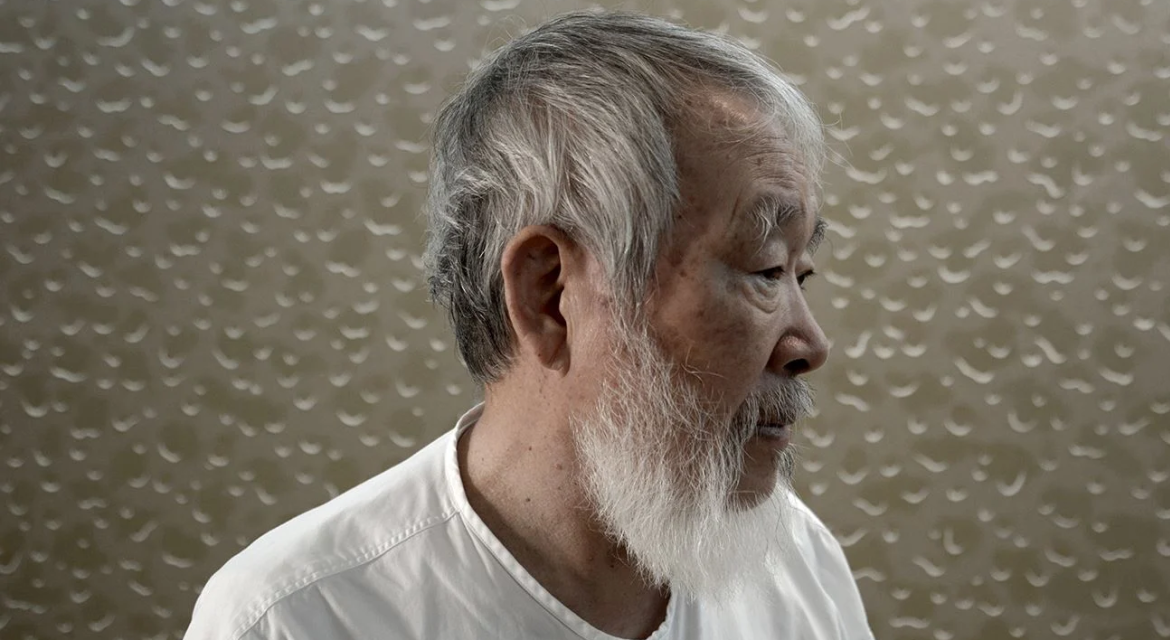
© Oan Kim / MYOP
The birth of the waterdrops
The early works of Kim Tschang-Yeul are characterized by the use of a visible touch and a non-figurative repertoire, which find their sources in American abstract expressionism and the productions of the contemporary School of Paris. In the 1960s, this vocabulary became seemingly simpler and closer to the compositions of color-field paintings.
It was in these paintings that circular forms appeared for the first time. At the end of the decade circles also returned in several of Kim Tschang-Yeul’s compositions, strongly influenced by optical art. In these works, the use of vaporous graded shades of black on white curved surfaces sometimes calls to mind the representation of viscous fluids. This evocation became explicit in the early 1970s, when these liquids became the true subject of the paintings and appeared to seep out from fictitious openings in the composition.
In 1972 this motif transformed into a falling waterdrop, treated in a hyperrealist style, then evolved when Kim Tschang-Yeul laid the final foundation of his vocabulary in the same year. Henceforth, these waterdrops, whose repetition was for the artist an attempt to “dissolve all suffering by neutralizing his ego”, became trompe-l’oeil representations, as if simply laid on a canvas without a primer. Their layout, their number, their shape, and the representation of possible traces of moisture would be from now on the main features conveying variety in Kim Tschang-Yeul’s productions.
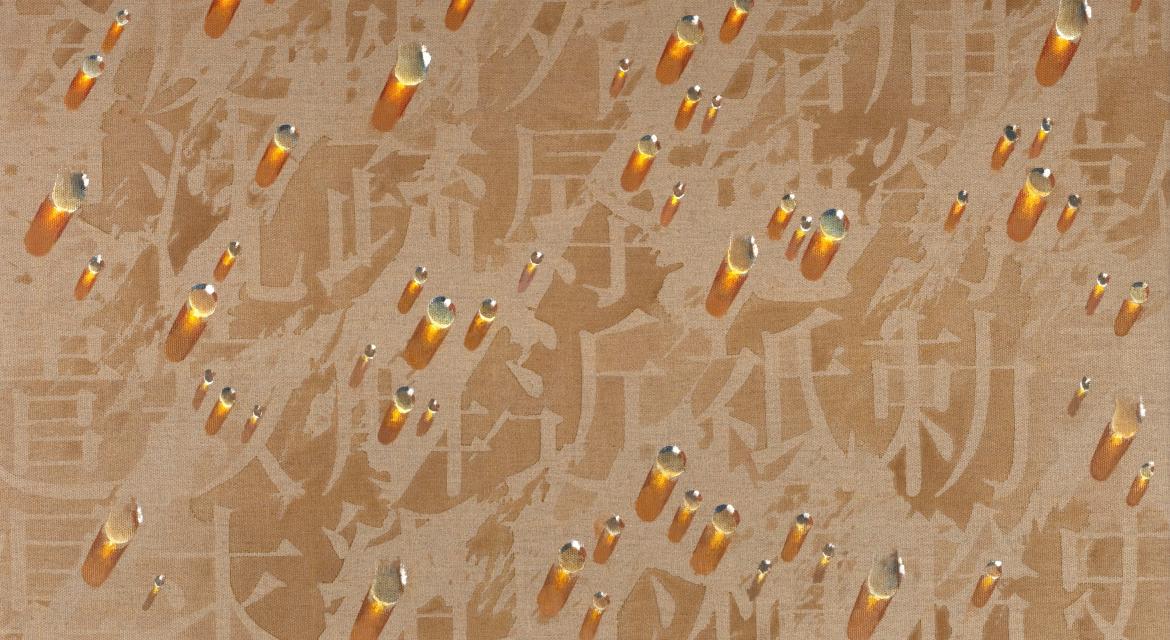
Tinfix, oil and acrylic on canvas
162 x 130 cm
M.C. 2014-4
Purchased, 2014
© Paris Musées / Musée Cernuschi © Kim Tschang-Yeul / Adagp, Paris, 2023
The appearance of script
Because of its radical originality Kim Tschang-Yeul’s quickly stood out in the field of contemporary painting. The obsessive representations of waterdrops, all the more mysterious as the artist remained silent about them for a long time, could apparently only be linked, in the 1970s, to a form of hyperrealism. However, Kim Tschang-Yeul refused to be affiliated to this trend, from which he kept away by some of his intellectual and visual choices.
While the representatives of hyperrealism create paintings that define themselves as mere images, the works of the Korean painter establishes an unprecedented visual ambiguity through the use of the canvas as a constitutive element of the trompe-l’oeil. The way in which onlookers are encouraged to examine their vision and the nature of painting, particularly noticeable in the rare works that play on the effects of double vision, thus places the relationship between the motif and the background at the heart of Kim Tschang-Yeul’s work.
This background therefore received much attention, which led the artist to incorporate Chinese script in many of his works. If the use of a newspaper page as a support in the mid-1970s seems in that sense to be a first milestone, it was in the 1980s that Kim Tschang-Yeul began to cover his works with sinograms. Thus, between the waterdrops and the canvas, he introduced a fictitious plane that made it possible to enrich the variety of interactions between his main motif and the background on which it was spread out.
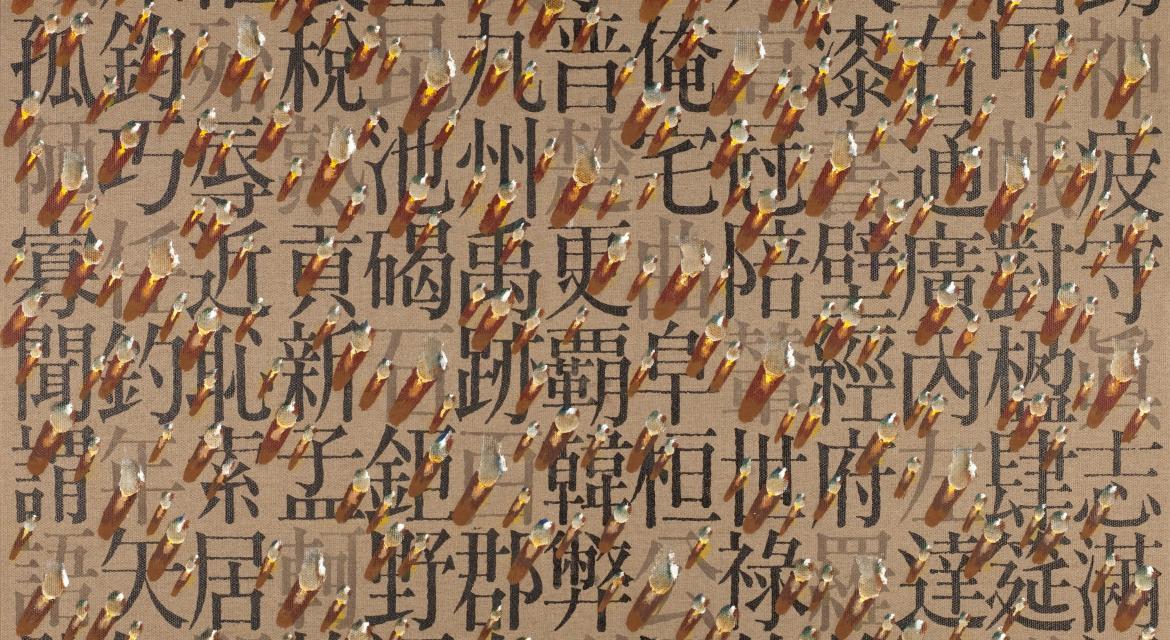
India ink, oil and acrylic on canvas
162 x 130 cm
M.C. 2014-3
Gift of the artist, 2014
© Paris Musées / Musée Cernuschi © Kim Tschang-Yeul / Adagp, Paris, 2023
Typography and calligraphy
When incorporating sinograms in his creations, Kim Tschang-Yeul uses most of the time typographical forms of characters. It is visible in the formal regularity of the script, whose every element is inscribed in an ordered grid, and the repetition of identical normalized lines. This choice, which requires a long implementation, allows him to retain an impersonal technique and thus to partially maintain the appearances of the trompe-l'oeil.
The use of sinograms is however not only a formal artifice. Their presence roots the works in an Asian cultural context in an explicit way. Kim Tschang-Yeul systematically resorted to extracts from the Thousand Character Classic, a book used for centuries to teach Chinese written language to children. Thus, he made it possible to reconcile both the use of a book omnipresent in the classical culture of East Asia and a repetitive and standardized approach, which denies the signifying dimension of the text and, in doing so, fosters a questioning of the meaning of representation.
The evocation of tradition is reinforced by the increased number of references to calligraphic art, to which the artist was introduced in his youth by his grandfather. Therefore, several works are adorned not with sinograms, but with simple lines whose assembling enables one to create all the characters of the Chinese language. Furthermore, Kim Tschang-Yeul also uses sometimes handwriting in works executed, significantly, in ink on paper.
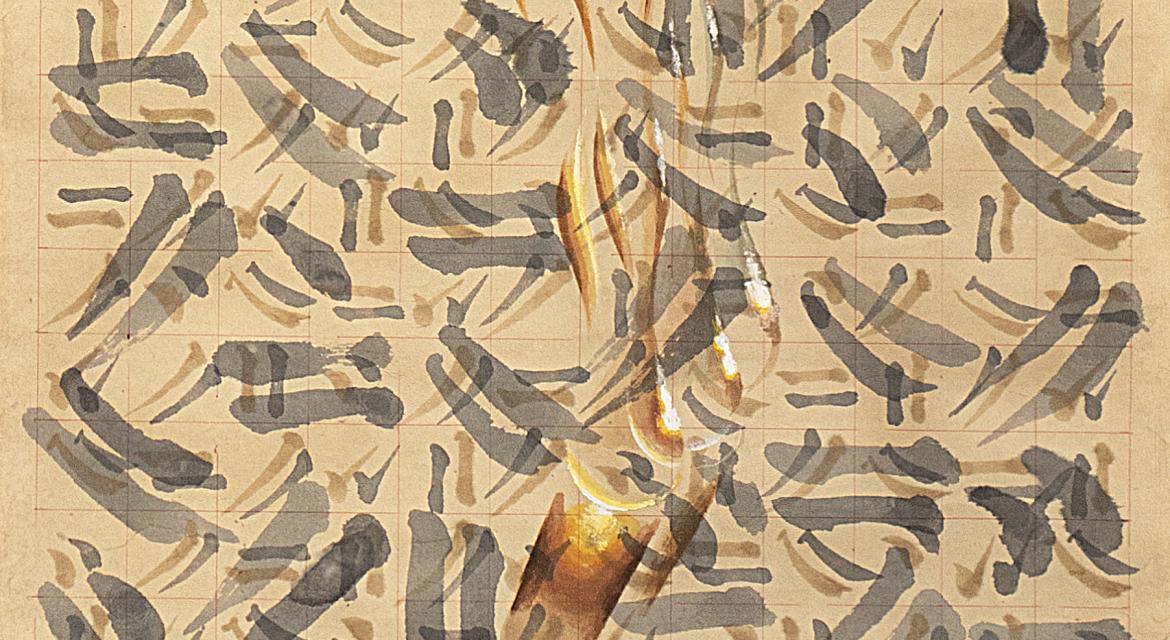
Oil and acrylic on paper
164 x 56 cm
Private collection
© Kim Tschang-Yeul / Adagp, Paris, 2023
Variations
The great coherence of the work of Kim Tschang-Yeul, who used the same motifs for close to five decades, is an essential and significative element in his oeuvre. The artist however rapidly perceived this characteristic as something that could slow down his creative activity. Without fundamentally modifying their framework, he therefore tried early on to introduce variations in his paintings.
Apart from the multiple compositions made possible by the different combinations of the waterdrops and Chinese characters, this diversity resulted mainly from the use of colours. In a few paintings from the 1980s Kim Tschang-Yeul spread his waterdrops on a monochrome painted canvas. At the end of this decade, he began also to enhance some of his backgrounds, adorned with sinograms, with subtly coloured shades evoking patinas and, in doing so, the passing of time.
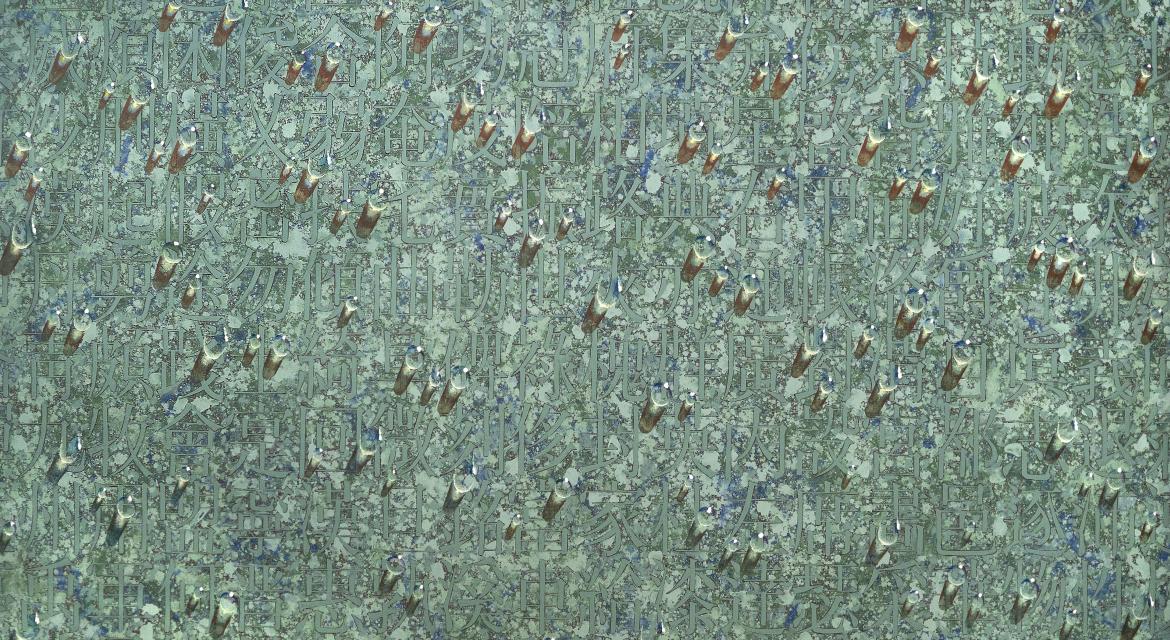
Oil and acrylic on canvas
195 x 300 cm
Private collection
© Kim Tschang-Yeul / Adagp, Paris, 2023
This attention to the surfaces and textures also explains Kim Tschang-Yeul’s desire to vary supports. From the 1970s, he worked on his canvases and at the same time on white or coloured papers and on newsprint. He also started to paint on sand, wood, wood pulp, and burlap. These numerous experiments finally led him to produce, from the 1990s, sculptures and installations in which the waterdrops were embodied by glass spheres.
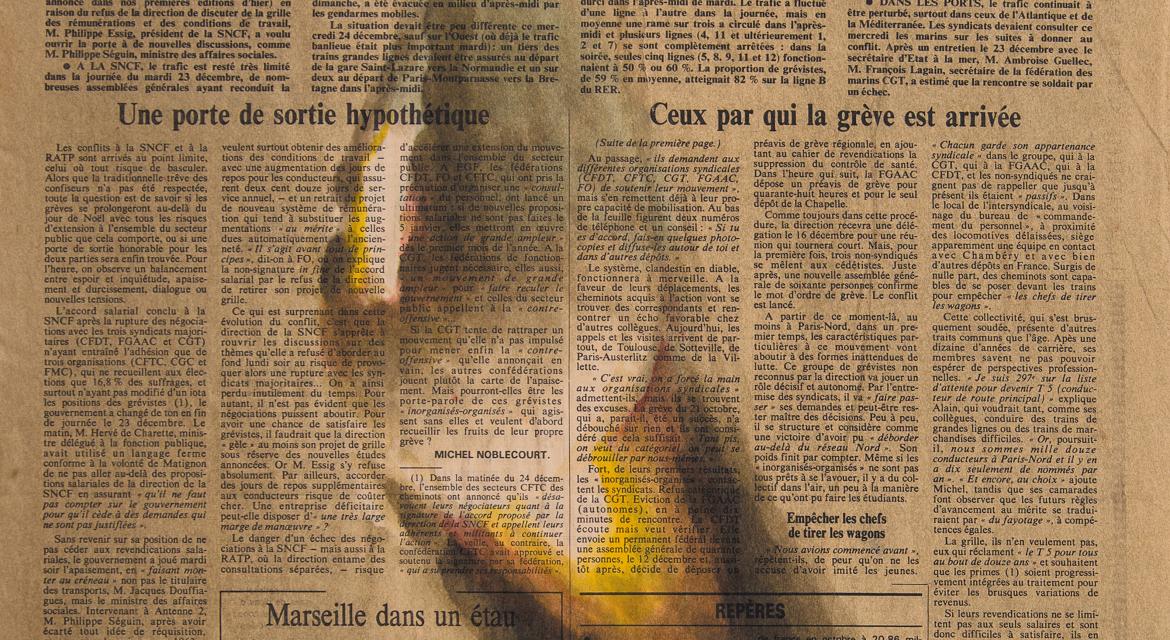
Watercolour on newsprint (newspaper "Le Monde", "Economie" column, issued on Thursday 25 December, 1986)
55 x 39 cm
Private collection
© Kim Tschang-Yeul / Adagp, Paris, 2023
This exhibition is organized with the support of Almine Rech
